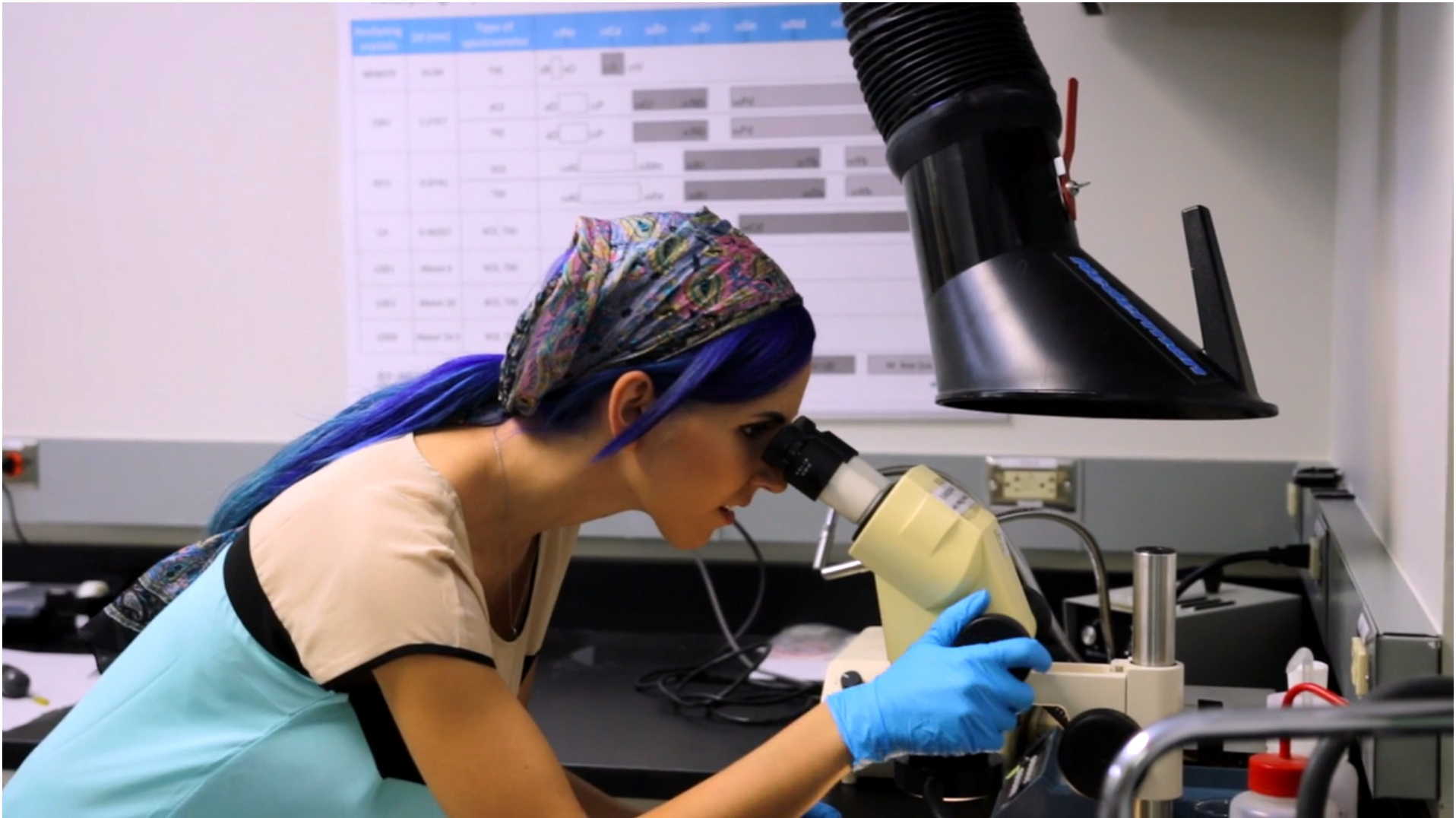Editor's note: This story is part of a series of student profiles that are part of our December 2015 commencement coverage.
When Ron Dorn, professor and instructor of Emily Kaba’s course in Landform Processes, began talking about “geomorphology puzzles,” and especially the odd-looking rocky hills just north of campus in Papago Park, Emily Kaba was intrigued.
Kaba came to ASU from Dubai in the United Arab Emirates, where she’d been born and raised. With a multilingual family in which she learned Norwegian from her mother and Arabic from her father, Emily attended a British school. As a senior in high school under the British system, she chose three topics to focus her studies on: theater, performance arts and geography.
“In geography, we were expected to conduct research, and I was surprised at how much I enjoyed it,” said Kaba. She chose to focus on water sustainability — but still intended to focus on theater and performance arts in her college studies, until she visited her brother, who was at that time studying at ASU.
“I loved the ASU campus and the desert environment, and ended up the next year as a freshman here, majoring in geography,” Kaba said.
As a sophomore, she had an opportunity to do an internship with ASU’s Decision Center for a Desert City, where she researched the process of decision making within Arizona’s irrigation districts.
It was that same semester that Dorn introduced her to the many questions that exist about landforms and how they came to be. He told her that the rocks that form the rounded caves of the Papago Hills — with their small clusters of smooth holes — are called “tafoni,” and that scientists don’t fully understand how they form. He told her about a few hiking trails where she could look at tafoni in real life — and along with the trails, Kaba discovered her honors thesis research path.
Emily Kaba hopes to turn her findings into a submission for a scientific paper.
Kaba was able to train to use one of ASU’s powerful electron microprobes. She gathered samples of tafoni from Papago Park as well as Picketpost Mountain near Superior, Arizona, and on a trip home, was also able to collect samples from a site in neighboring Oman. She mastered the art of preparing the samples for the electron microprobe and analyzing the microprobe’s images together with results of X-ray analysis — processes more typically undertaken as part of doctoral or post-doctoral studies.
Her observations and analysis began to reveal some pieces of the puzzle. In all three locations, chemical and physical processes work together to erode rock into the unique tafoni surface. The processes in the samples from Papago Park and Oman appeared to be quite similar — but although the Picketpost Mountain rocks look very similar, they appeared to have a very different history.
Another key finding is that processes operating on the tiniest components of the rock influence those operating at a slightly larger scale, and these in turn generate the tafoni forms that we see.
These findings are novel enough to be published, and writing at least one paper to submit to a scientific journal is high on Kaba’s post-graduation to-do list.

It was on the hiking trails in Papago Park where Emily Kaba discovered her honors thesis research path: studying tafoni, rocks with small clusters of smooth holes.
This and top photo by Charlie Leight/ASU Now
“Initially I thought there might be one finding to write up as a scientific paper,” said Kaba. “But my work kept going down new side-paths — with each new finding the puzzle grows larger.”
Kaba’s immediate plans after graduation focus on finding employment in a setting where she can continue to build research experience, while also using skills she has developed in GIS, or geographic information science. Together with coursework, Kaba built expertise in GIS working in her last two years at ASU as a GIS research aide with the MapStory project, which is housed in ASU’s Decision Theater.
Kaba will graduate summa cum laude in December with a major in geography, a minor in sustainability, a certificate in GIS, and recognition as a College of Liberal Arts and Sciences Dean’s Medalist.
“We feel very lucky to have been Emily’s academic home,” said Patricia Gober, interim director of the School of Geographical Sciences and Urban Planning. “She is a talented geographer, with outstanding GIS skills, and passion for ASU and our school.”
More Environment and sustainability

From environmental storytelling to hydroponics, student cohort crafts solutions for a better future
A select group of students from Arizona State University's College of Global Futures, a unit within the Julie Ann Wrigley Global Futures Laboratory, is laying the foundation to drive change…

2 ASU faculty elected as AAAS Fellows
Two outstanding Arizona State University faculty spanning the physical sciences, psychological sciences and science policy have been named Fellows of the American Association for the Advancement of…

Homes for songbirds: Protecting Lucy’s warblers in the urban desert
Each spring, tiny Lucy’s warblers, with their soft gray plumage and rusty crown, return to the Arizona desert, flitting through the mesquite branches in search of safe places to nest.But as urban…



